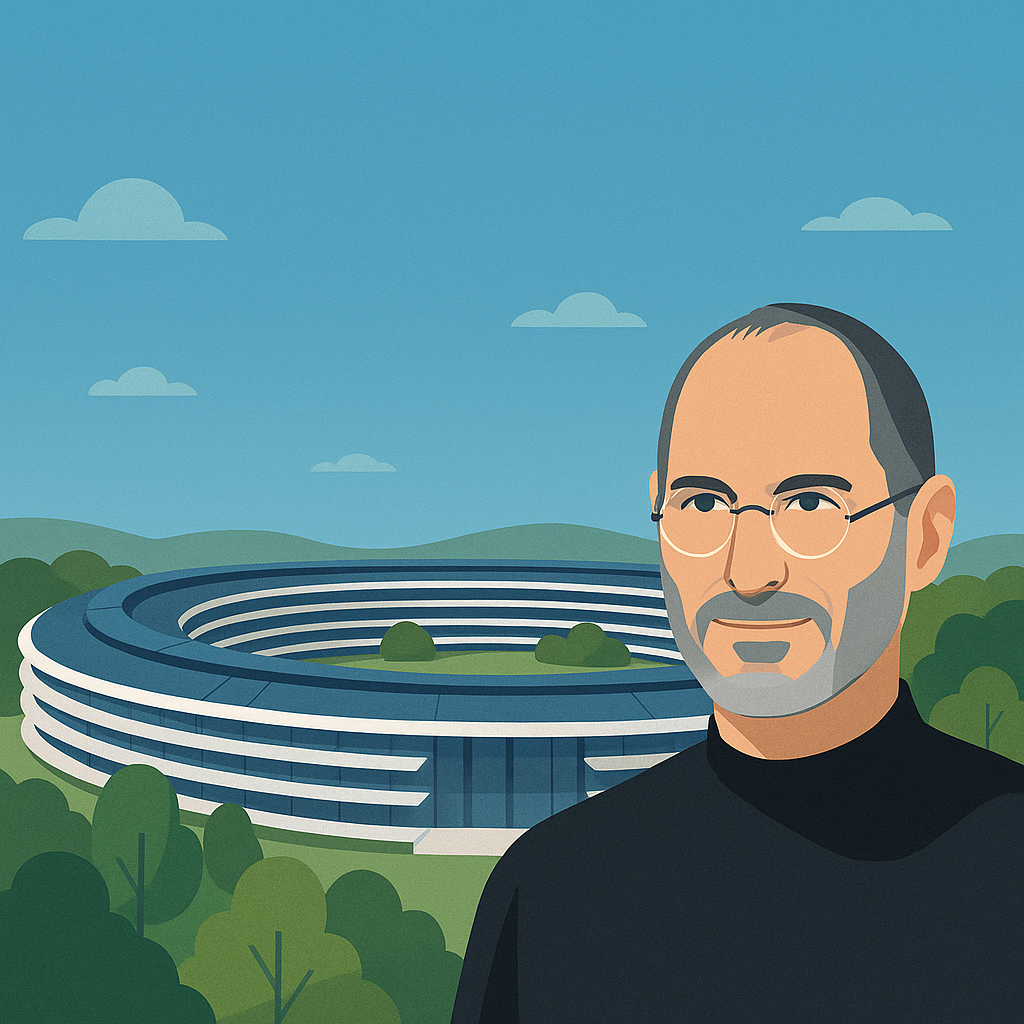
Apple Park: The Ring That Reshaped Silicon Valley
In Cupertino, California, nestled among suburban neighborhoods and green hills, lies one of the most ambitious architectural and environmental projects ever undertaken by a tech company. This is Apple Park — Apple’s 175-acre campus, often referred to as “the spaceship” for its massive circular design.
Apple Park was more than a headquarters; it was a vision brought to life. Designed in collaboration with renowned architect Norman Foster and his firm Foster + Partners, and heavily influenced by the late Steve Jobs himself, the idea was to create a space that was as innovative and refined as Apple’s products.
The campus houses over 12,000 employees in a single, four-story ring-shaped building. It features 800 curved glass panels — the largest in the world — and is powered entirely by renewable energy. Solar panels line the roof, and natural ventilation makes air conditioning unnecessary for much of the year.
“We have a shot at building the best office building in the world. Architecture students will come here to see it.”
— Steve Jobs, to the Cupertino City Council in 2011
Construction began in 2014 and cost an estimated $5 billion. From underground tunnels and a 1,000-seat Steve Jobs Theater, to a 100,000-square-foot fitness center and an on-site café that seats thousands, every inch of the space was meticulously designed.
The landscaping, too, is deliberate: over 9,000 drought-resistant trees, California natives like oaks and apricots, reflect Apple’s commitment to sustainability and Jobs’ love for nature. In fact, much of the land was transformed from asphalt to greenery, reducing the heat island effect and reintroducing wildlife to the area.
- Over 9,000 drought-resistant trees
- California-native species like oaks and apricots
- Land converted from asphalt to greenery
- Reduced heat island effect
- Revived local wildlife habitats
Apple Park is as much about design as it is about function. Interior spaces are open and flexible, built to encourage collaboration. Walking paths loop through the campus, and employees can work while strolling or sitting outside — a nod to Steve Jobs’ penchant for walking meetings.
It also marks a shift in how major corporations think about workspace. Apple Park is not just a workplace; it's an embodiment of philosophy — one that believes beauty, nature, innovation, and productivity aren’t separate. They coexist.
Whether you view it as a corporate vanity project or a revolutionary blueprint for future campuses, Apple Park is undeniably a marvel of design and ambition — as elegant and bold as the products it’s home to.